Monet to Picasso: The Batliner Collection
Lot-Art visited the exhibition "Munch Chagall Picasso. The Batliner Collection" at ALBERTINA in Vienna, Austria.
The ALBERTINA is home to one of Europe’s largest and most outstanding collections of classical modernist paintings: The Batliner Collection. It was turned over to the ALBERTINA by Rita and Herbert Batliner in 2007, opening a new chapter in the museum’s history.
From French Impressionism, Pointillism and Fauvism (including works by Monet, Renoir, Degas, Cézanne, Toulouse-Lautrec, Braque, and Matisse) to masterpieces of the expressionist artists’ groups Die Brücke and Der Blaue Reiter (including paintings by Kirchner, Kandinsky, and Nolde) and on to the Russian avant-garde and numerous works by Pablo Picasso, this permanent exhibition presents all of modernism’s revolutionary ideas.
The 2007 decision by Herbert and Rita Batliner to turn their collection over to the public, along with their choice of the ALBERTINA Museum as a partner, enriched the museum landscape in a lasting way for contemporary art, too. Beginning at the turn of the millennium onward the Batliners began collecting the diverse painted output of the present era: Georg Baselitz, Anselm Kiefer, Alex Katz, Imi Knoebel, and Arnulf Rainer.
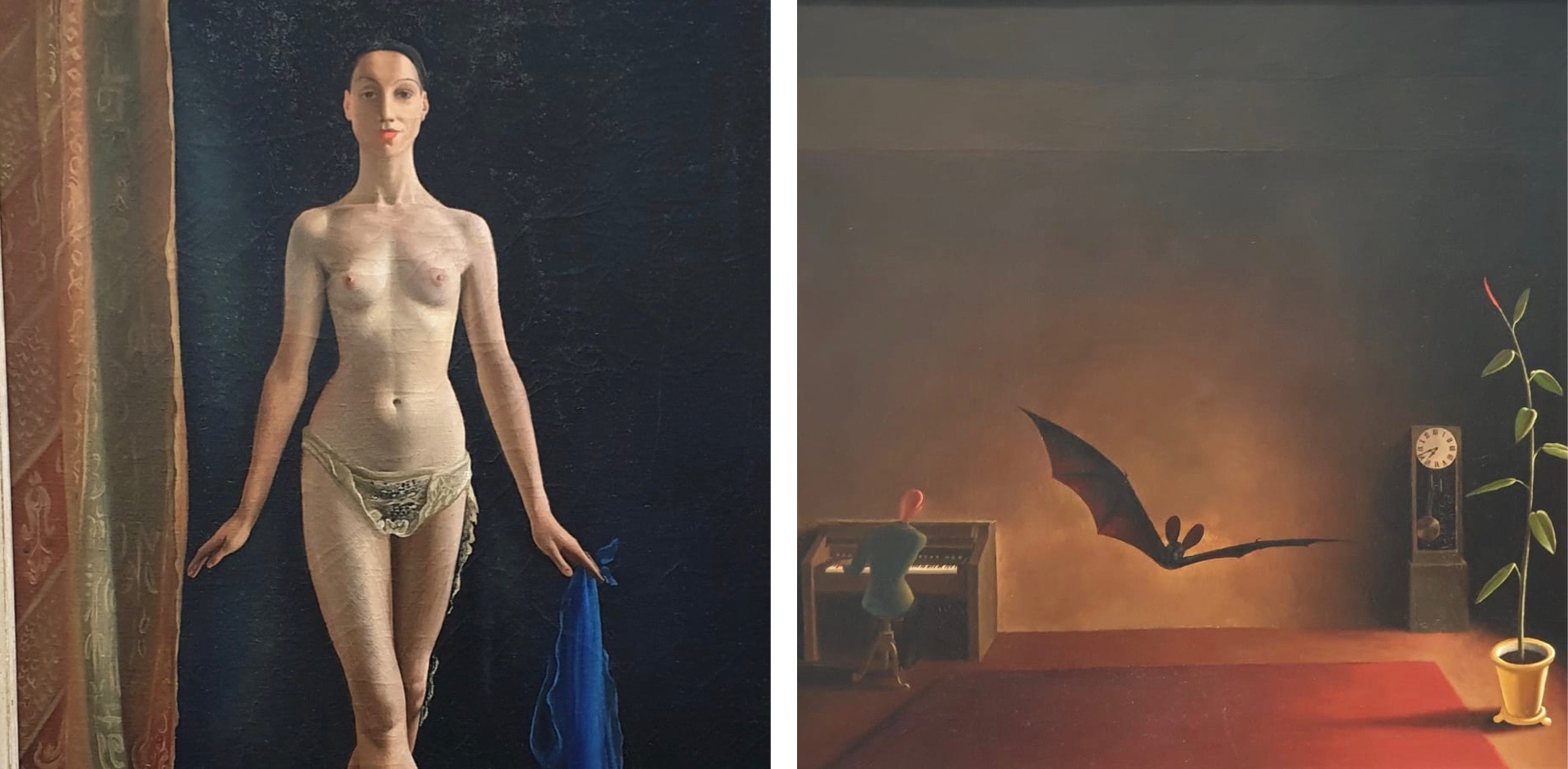
Left: Greta Freist (1904-1993) - La Danseuse, 1938 (see full-size image »); Right: Franz Sedlacek (1891-1945) Twilight Song, 1931 (see full-size image »)
NEW OBJECTIVITY
Next to the continuation of Oskar Kokoschka's painterly expressionism, a contrary movement established itself in Austria in the 1920s: New Objectivity. Its name derives from the title of an art exhibition staged in 1925 to showcase artists who were working in a post-expressionist spirit. The paintings are characterized by clarity and precision. The movement is characterized by rendering reality in an objective manner with great sobriety. Although principally describing a tendency in German painting, the term took a life of its own and came to characterize the attitude of public life in Weimar Germany as well as the art, literature, music, and architecture created to adapt to it.
In Austria, New Objectivity was dominated by two movements: Franz Sedlacek's magic realism and Rudolf Wacker's matter-of-fact representation of reality. Twilight Song radiates the mood between idyll and threat that is so characteristic of this artist's work.
Austrian painting made an extraordinary significant international contribution to the New Objectivity ( Neue Sachlichkeit) of the 1920s and 1930s. The most outstanding proponents of this approach were Franz Sedlacek, Herbert Reyl-Hanisch, and the early Greta Freist. La Danseuse is the third of three self-portraits Greta Freist painted within two years. She presents herself as a dancer on a stage in a graceful dance step pose - as if she had just finished her performance and were about to bow to the public. The artist pushes the limits of self-portrayal with this nude.
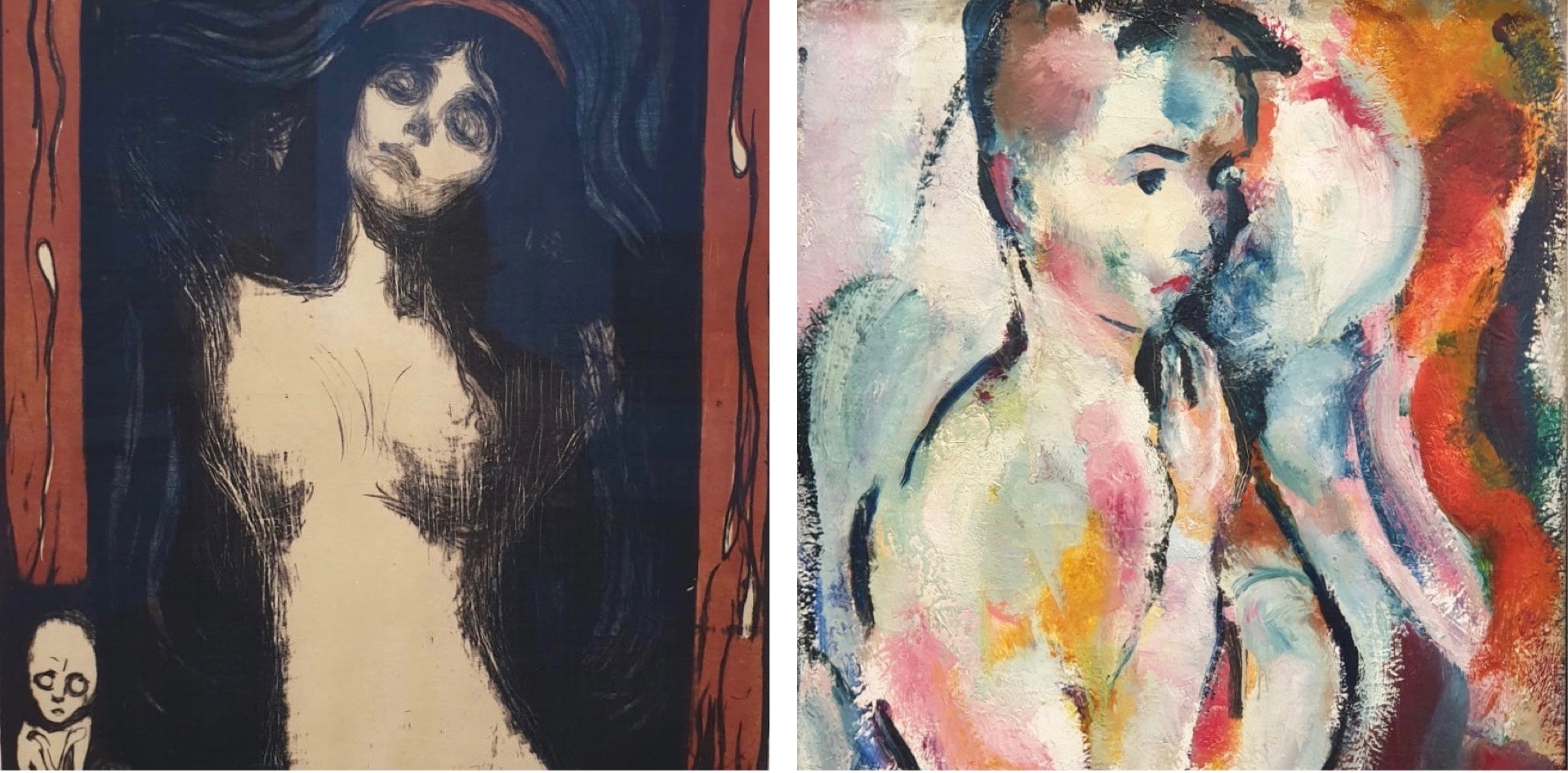
Left: Edvard Munch (1863 - 1944) Madonna 1895/1902 (see full-size image »); Right: Herbert Boeckl (1894 - 1966) Portrait of M.B., 1919 (see full-size image »)
THE BRIDGE
Die Brücke (The Bridge) was a group of German expressionist artists formed in Dresden in 1905. Founding members were Fritz Bleyl, Erich Heckel, Ernst Ludwig Kirchner and Karl Schmidt-Rottluff who directly followed Fauvism and likewise were impressed by the primitive originality of African sculpture. For a short time, Emil Nolde and Edvard Munch also joined this renewal movement, which was fuelled by an anti-academic and anti-naturalist spirit. The writing of Chronik der Brücke (Brücke chronicle) In 1913 by Kirchner leads to the ending of the group.
One of the most influential protagonists of Modernism and pioneers of Expressionism was Edvard Munch. His oeuvre occupies a saddle position between Symbolism and Expressionism. Munch's melancholy winter landscapes unfold archetypical existential situations and render symbolic figures of human life, loneliness, and social coldness.
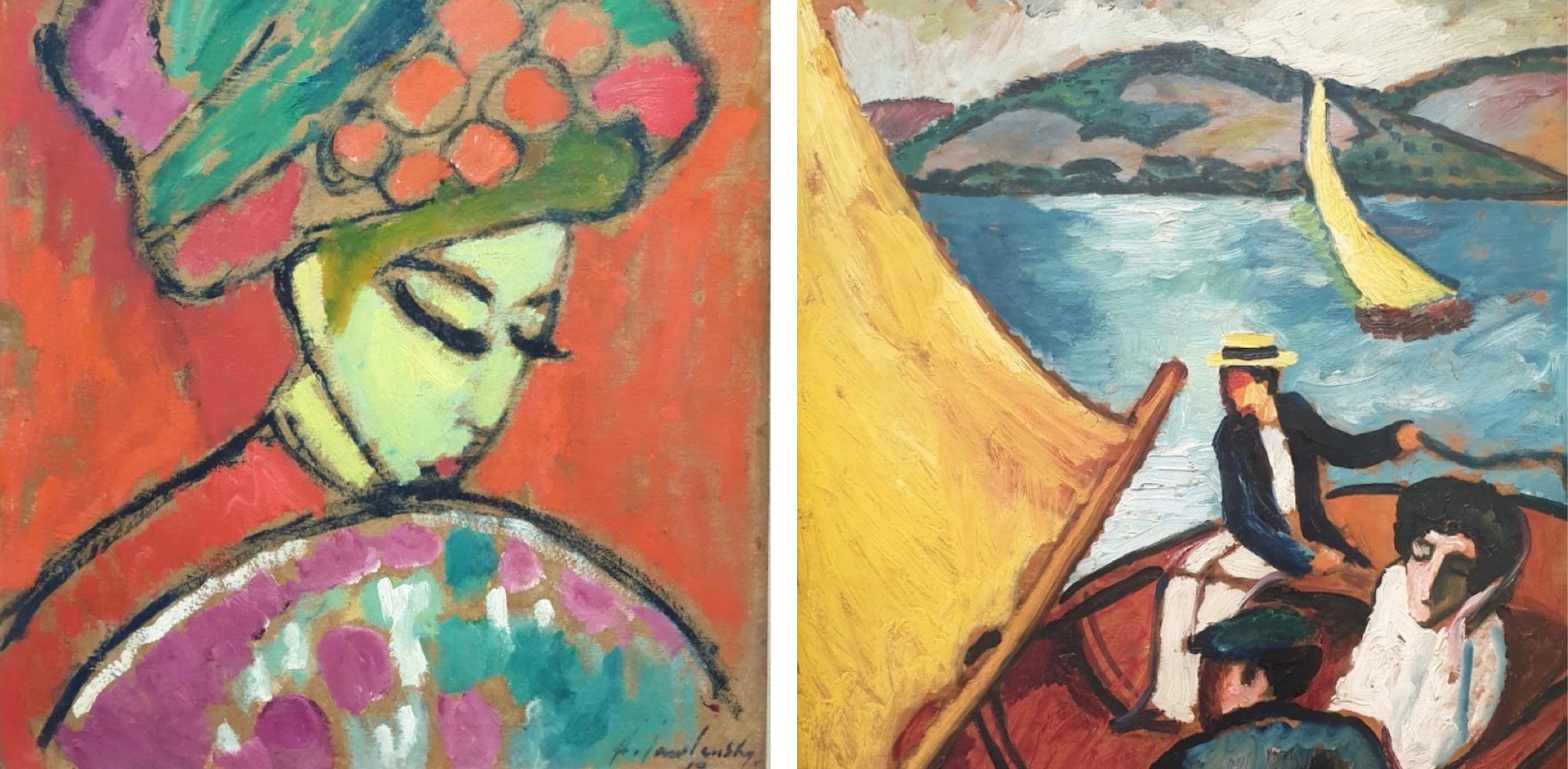
Left: Alexej Jawlensky (1864 - 1941) Young Girl with a Flowered Hat, 1910 (see full-size image »); Right: August Macke (1887 - 1914), Yachting on Lake Tegern, c 1910 (see full-size image »)
THE BLUE RIDER
Der Blaue Reiter was an art movement lasting from 1911 to 1914, fundamental to Expressionism, along with Die Brücke. It was only for a few years that Munich became the centre of German avant-garde art in the early twentieth century. Der Blaue Reiter (The Blue Rider) association of artists was founded there by Vasily Kandinsky and Franz Marc in 1911. Further members included Alexei von Jawlensky, August Macke, Gabriele Münter, Paul Klee, Marianne van Werefkin, and Lyonel Feininger.
The name of the movement is the title of a painting that Kandinsky created in 1903. Kandinsky wrote 20 years later that the name is derived from Marc's enthusiasm for horses and Kandinsky's love of riders, combined with a shared love of the colour blue.
The colourful painting Girl in a Flower Hat attests to Jawlensky's study of Matisse's and the Fauves' painting whose first sensational exhibition in Paris he had seen in 1905. The Asian impression given by this picture is not only due to the model, but must also be seen as a deliberate choice, as Japanese drawings, woodcuts, and textiles had come into fashion in Europe in the late nineteenth century. 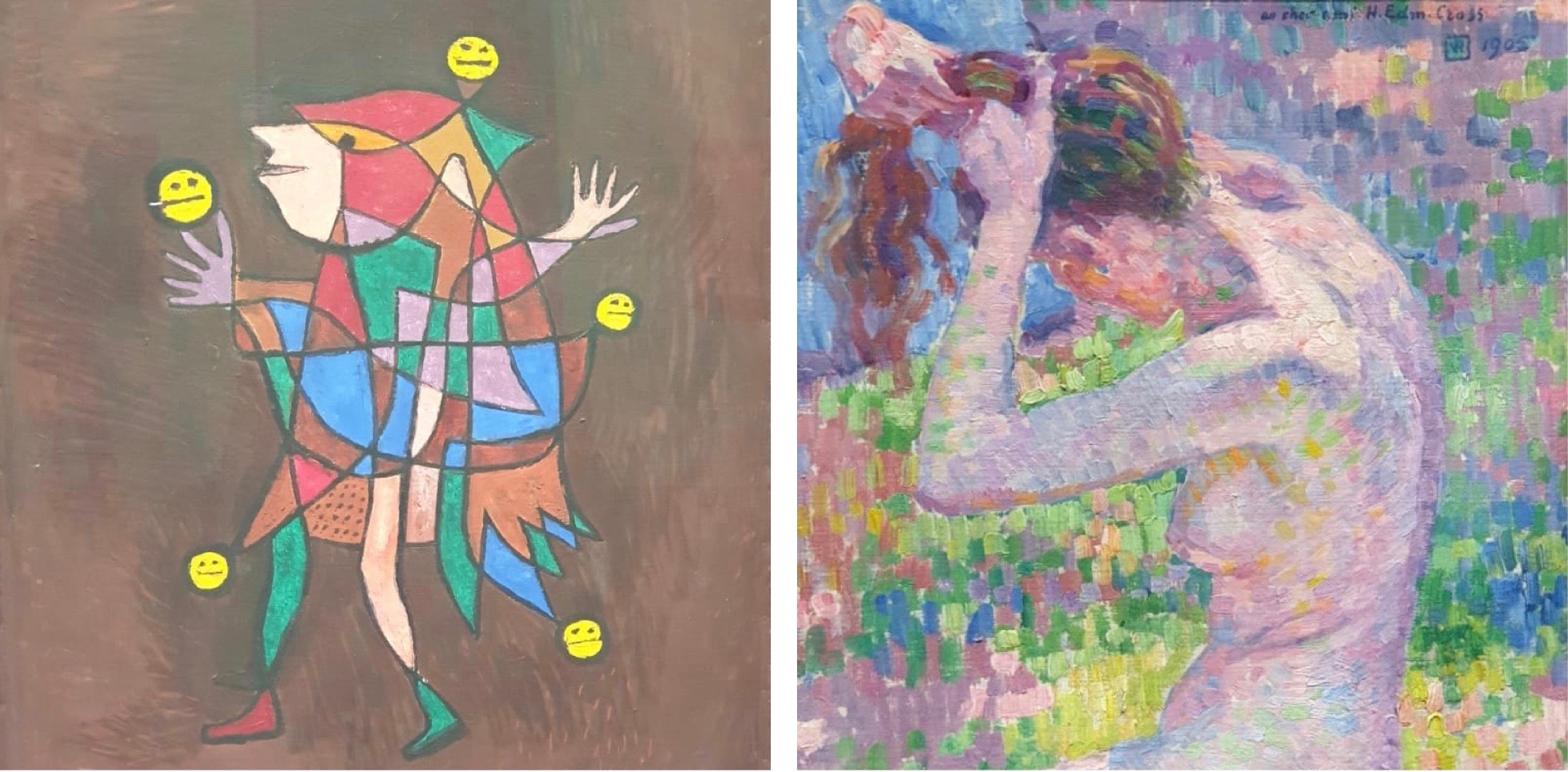 Left: Paul Klee (1879 - 1940) - Figurine "The Fool", 1927 (see full-size image »); Right: Théo van Rysselberghe (1862 - 1926) Seated Nude, 1905 (see full-size image »)
Left: Paul Klee (1879 - 1940) - Figurine "The Fool", 1927 (see full-size image »); Right: Théo van Rysselberghe (1862 - 1926) Seated Nude, 1905 (see full-size image »)
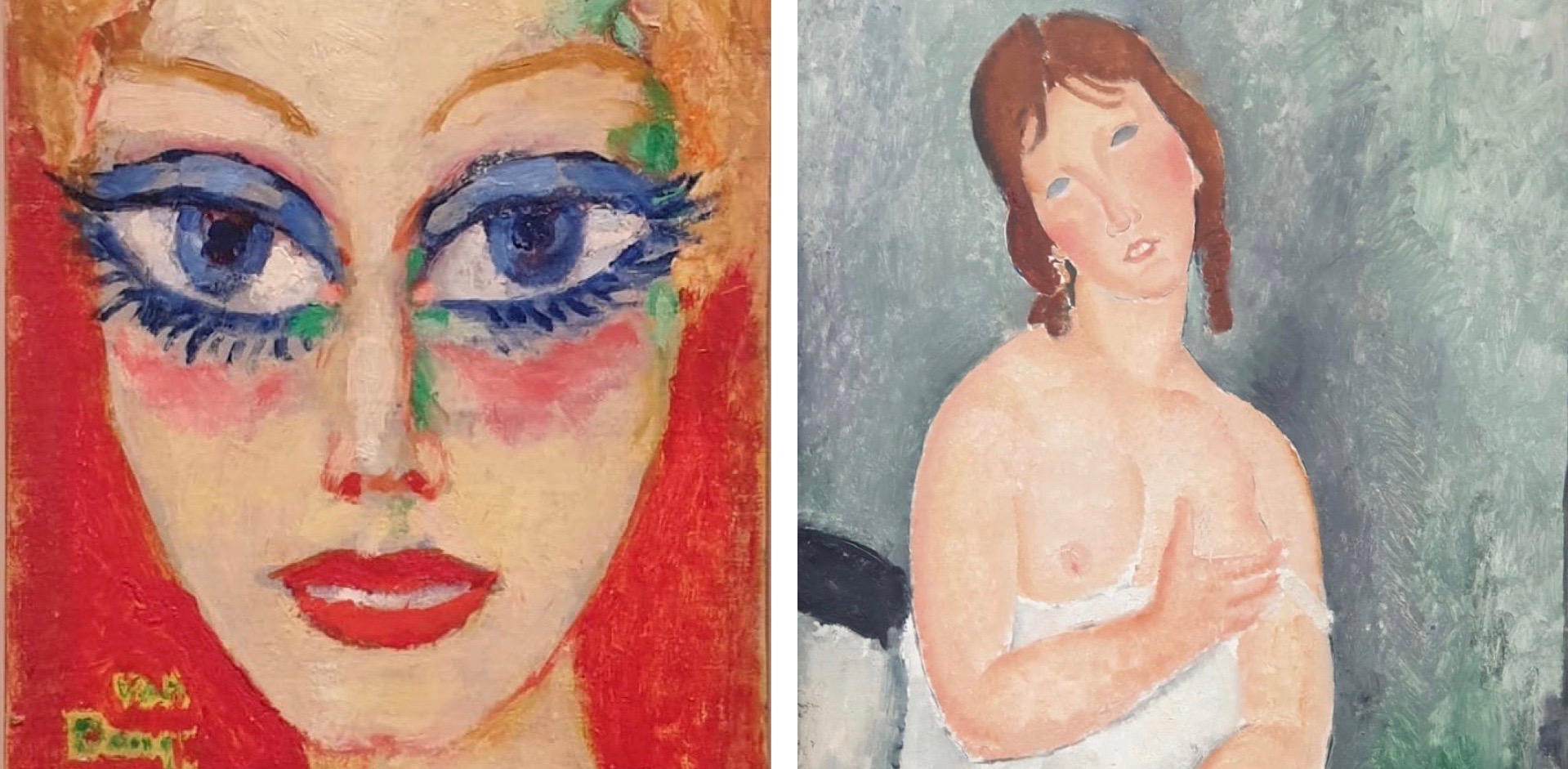
Left: Kees van Dongen (1877 - 1968) Woman with Blue Eyes, 1955 (see full-size image »); Right: Amedeo Modigliani (1884 - 1920) Prostitute, Cannes 1918 (see full-size image »)
PABLO PICASSO
Regarded as one of the most influential artists of the 20th century, alongside Matisse and Miró, Picasso is mostly known for co-founding the Cubist movement. Picasso's work is often categorized into periods. While the names of many of his later periods are debated, the most commonly accepted periods in his work are the Blue Period (1901–1904), the Rose Period (1904–1906), the African-influenced Period (1907–1909), Analytic Cubism (1909–1912), and Synthetic Cubism (1912–1919). Much of Picasso's work of the late 1910s and early 1920s is in a neoclassical style, and his work in the mid-1920s often has characteristics of Surrealism. His later work often combines elements of his earlier styles. Especially three of his stylistic periods informed the work of generations of artists: his Cubist period, his neo-classicist period, and his late work from 1961 until his death in 1973.
Picasso was born in Málaga in 1881. His work shows an exceptional variety of artistic means of expression, often superseding each other in quick succession. His Blue and Pink periods were followed by years by radical change from 1906 to 1908. Picasso devoted himself to the study of Cézanne and the "primitive" art of Africa and Oceania. His study of primitivism became the starting point for Cubism. Together with Georges Braque and inspired by Cézanne, Picasso began to analyse his pictorial subjects formally and fragmenting them into different facets, rendered them in multi-perspective views, which he transferred to the two-dimensional surface of the canvas.
During the Second World War, Picasso stuck it out in Nazi-occupied Paris. He was slandered as a "degenerate" artist and banned from exhibiting his work. The pictures painted in secret were confined to still lifes, portraits of women, and landscapes.
Picasso's final works were a mixture of styles, his means of expression in constant flux until the end of his life. The eruptive pictures of his last years anticipate a new kind of figurative painting.
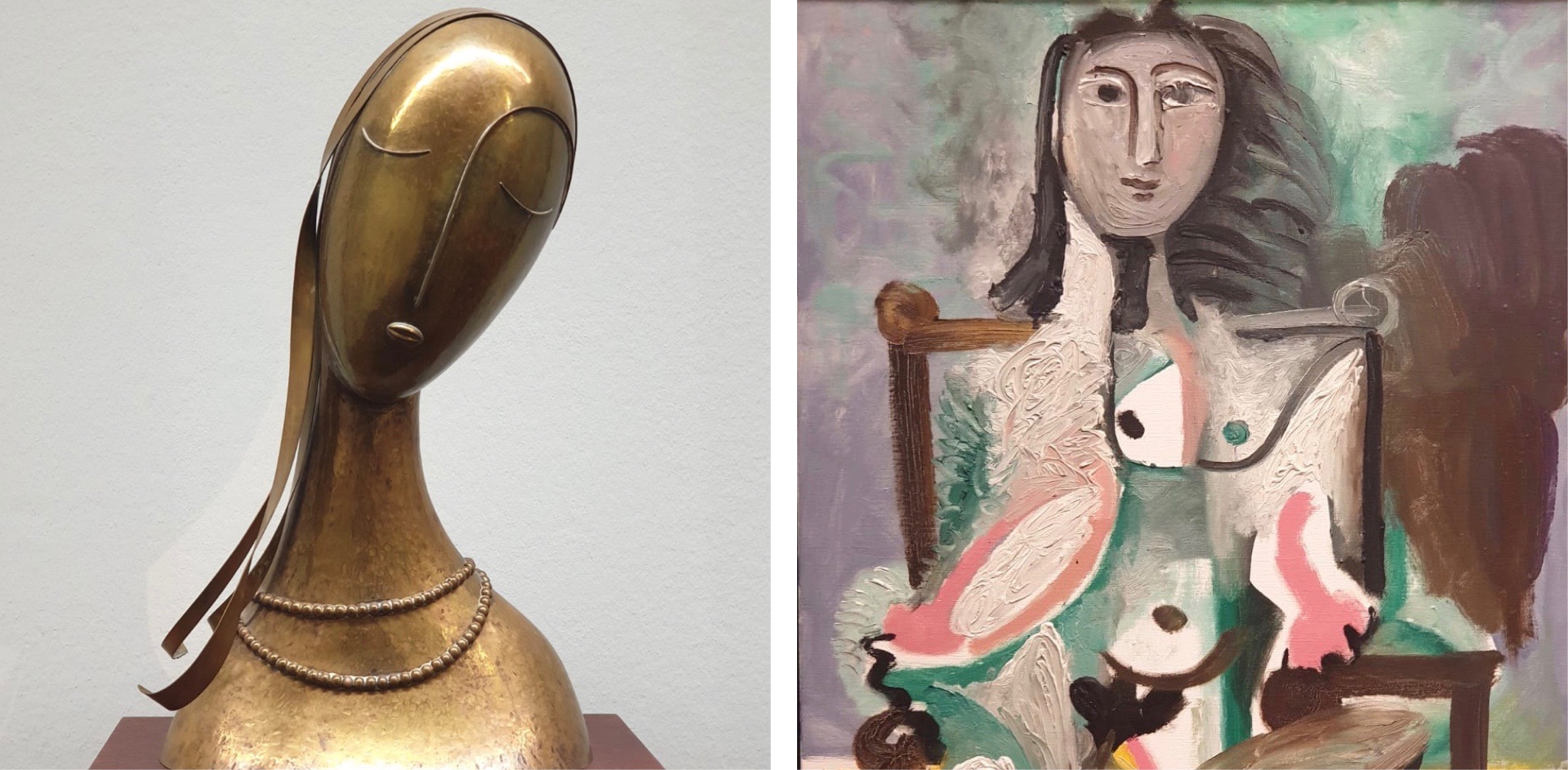
Left: Franz Hagenauer (1906 - 1986) - Female Head c. 1950 (see full-size image »); Right: Pablo Picasso (1881 - 1973) Nude Seated in a Chair, 1963 (see full-size image »)
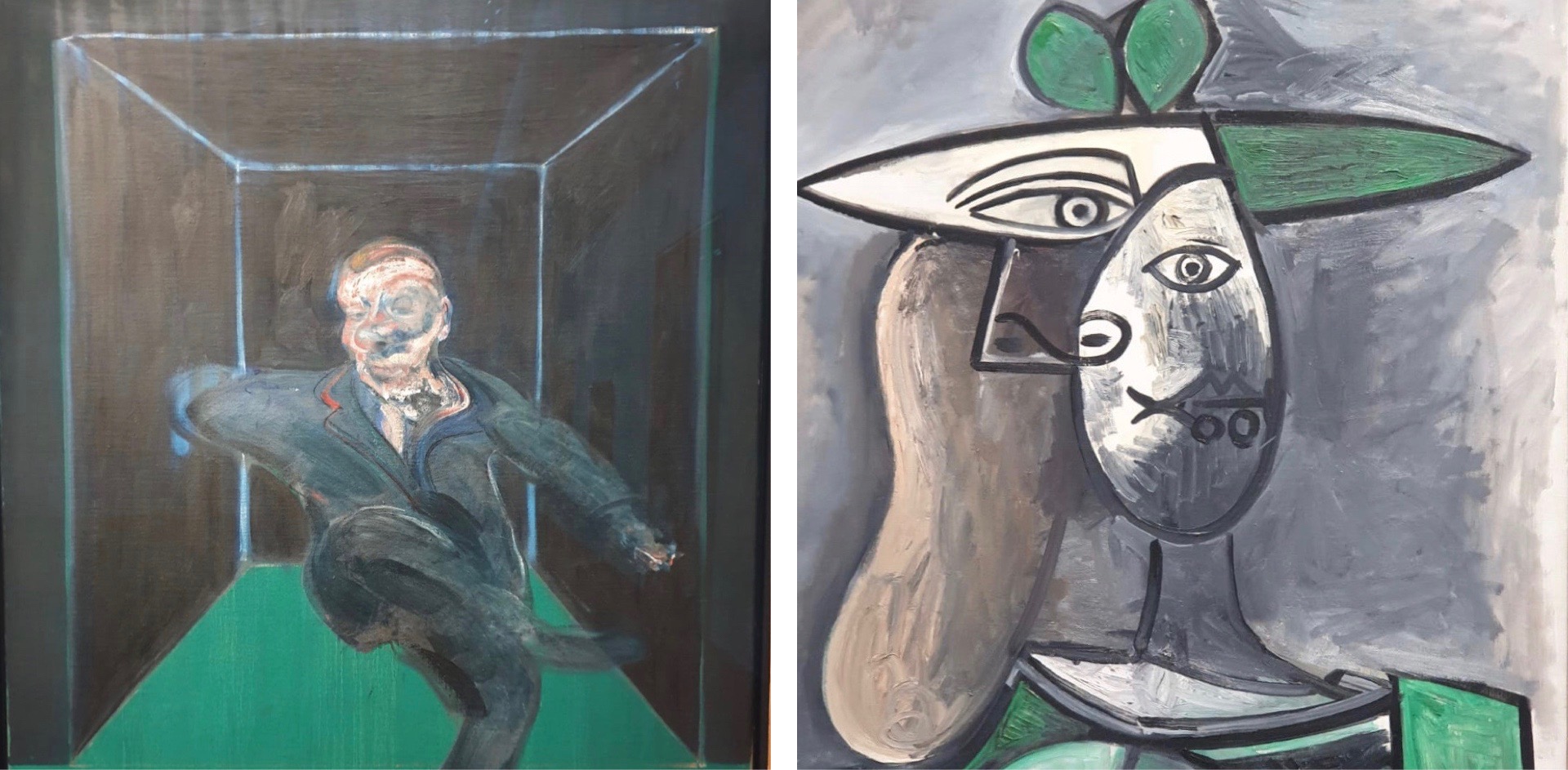
Left: Francis Bacon (1909 - 1992) Seated Figure, 1960 (see full-size image »); Right: Pablo Picasso (1881 - 1973) Woman in a Green Hat, 1947 (see full-size image »)
SURREALISM
Originating in Paris in the early 1020s the Surrealist movement was based on both Sigmund Freud's discovery of the unconscious and the revaluation of all values after the horrors of the First World War. It was also nourished by the fact that canon of art taught at the academies and considered valid for centuries had lost its significance.
Joan Miró helped art benefit from the literary technique of painting and drawing, which did not rely on any studies and preparatory drawings (automatism), became the foundation of Surrealist production.

Left: Joan Miró (1893 - 1983) Metamorphosis, 1936 (see full-size image »); Right: Alberto Giacometti (1901 - 1966) - Portrait of Anette, 1958 (see full-size image »)
The Belgian artists René Magritte and Paul Delvaux developed a special form: veristic Surrealism. Their works are characterized by an exact representation of motifs of the real world that are transferred into a strange, dreamlike context, however: Each object, tree, axe, bell - is like in a dream, but the overall impression is unreal.
Paul Delvaux's mysterious dream images betray their inspiration from Giorgio de Chirico and his "pittura metafisica". Like Magritte, Delvaux, although taking part in the Surrealists' exhibitions, always kept a critical distance to the movement. Landscape with Lanterns may be understood as a melancholic, retrospective glance at the past. In the centre appears a woman in black looking after a funeral cortege moving into the picture's depth.

Left: Paul Delvaux (1897 - 1994) Landscape with Lanterns, 1958 (see full-size image »); Right: Marc Chagall (1887 - 1985) Village Scene c.1924 - 1926 (see full-size image »)
THE RUSSIAN AVANT-GARDE
The Russian avant-garde was a large, influential wave of avant-garde modern art that flourished in the Russian Empire and the Soviet Union, approximately from 1890 to 1930—although some have placed its beginning as early as 1850 and its end as late as 1960. The term covers many separate, but inextricably related, art movements that flourished at the time; including Neo-Primitivism, Cubo-Futurism, Royonism, and Constructivism.
Chagall combined the narrative approach of his native Vitebsk's Jewish shtetl with the formalism of the West European avan-garde. He also left Russia for Paris. The "painter-poet" mainly dedicated himself to such subjects as his native Vitebsk, family life, and motifs from the Bible and the world of the circus.
Marc Chagall was born into a working-class family of Jewish origin in the Belarusian town of Vitebsk in 1887. Chagall founded an art academy and invited such avant-garde artists as Ei Lissitzky, Ivan Puni, and Kazmir Malevich to work there as teachers. He left for Paris in 1922, where he studied the most recent developments in the visual arts.
Even if the powerful colours of Village Scene seem to have been inspired by the Fauvists, Chagall remained true to the pictorial motifs of his childhood: the man climbing up a roof with a sack on his back, the hay wagon, the goat, the cockerel, the white harlequin, the houses of Vitebsk - all of these elements were retrieved from Chagall's visual memory. Memories, dream and nostalgia blend together to form a poetic whole. By depicting such dream worlds and entirely extinguishing causality, the artist anticipated Surrealism.
LOT-ART SERVICES
Saved-Searches and Personalized Alerts: Save all your keywords to quickly run your favorite searches in a single click. At your discretion, we can then send you email-alerts when new lots matching your saved-searches are available, so you will always have the most updated overview of the art market. Be the first to know when your favorite lots are for sale with customized alerts! On the page header click on "My Searches" -> "Create New Search".
Art Investment Advisory: proposing a financial approach to art collecting, Lot-Art offers a synergic cluster of tools for optimal investment decision-making in art-related assets. Lot-Art can help you selecting artworks & luxury collectibles with the highest degree of liquidity and opportunity of return. This service will best serve privates and institutions who wish to invest in art as an asset class but don’t have the expertise to unveil and select the best deals in the global art market, Download the Art Investment brochure.
Valuate & Sell: you can appraise for FREE the value of your art & collectibles with the purpose of selling at auction. Disclose the monetary value of your assets, request a free valuation »
Buy Now: Lot-Art has added, aside to auctions browsing, the opportunity to search artworks from trusted art collectors, artists and galleries. If you are not yet acquainted with the thrill of bidding at auction you can just buy selected artworks and luxury assets in perfect relax proposing your offer through the Lot-Art Gallery.
Discover more Highlights & Explore the Financial side of Art on Lot-Art.com
Disclose the value of your assets, request a free valuation
LOT-ART | The Art Investment Platform
Other interesting articles

|
Wed Apr 17 2024
Post-War & Contemporary Art at Venduehuis der NotarissenVenduehuis der Notarissen presents the April Auctions: Post-War & Contemporary Art on 8 – 23 April (Online Auction) The Lucassen Collection Part 1 on 24 April (Hammer Auction) The Lucassen Collection Part 2 on 8 – 25 April (Online Auction) Discover the Auction Highlights or browse the full catalogues here » SELECTED LOTS LEFT: Marlene Dumas (1953) - "Fear of Babies" The... |

|
Tue Apr 16 2024
The Cultural Wealth of Liechtenstein PalaceBernardo Bellotto (1722–1780), The Liechtenstein Garden Palace in Vienna from the Belvedere, 1759/60 | Photo Credits: LIECHTENSTEIN. The Princely Collections The Liechtenstein Palace, located in the heart of Vienna, is one of the most sublime expressions of Austrian Baroque architecture, constructed by the architect Domenico Martinelli. Invited by the noble Von... |

|
Mon Apr 15 2024
'The Berlin Sale' at Lempertz, GermanyLempertz, Germany presents 'Auction 1242 - The Berlin Sale' on April 20th. The catalogue features art related to Prussia, design, paintings, sculptures, porcelain and silverware. Discover the Auction Highlights or browse the full catalogue here » SELECTED LOTS LEFT: Wilhelm Brücke - "Parade by the Crown Prince's Palace at Unter den Linden" Oil on canvas. Gilded wooden... |
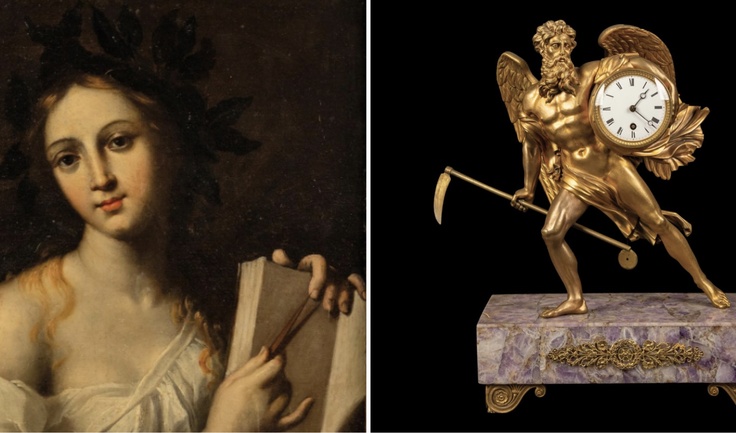
|
Sat Apr 13 2024
Fine & Decorative Art at Bolli & Romiti, RomeBolli & Romiti, Rome presents the auction "He Who Doesn't Seek is Found" on April 18th. The sale features a compendium of fine art, classic furniture and decorative art from a noble Roman family. Discover the Auction Highlights or browse the full catalogue here » SELECTED LOTS Venetian painter, early 19th century - "Views of Venice" Pair of oils on canvas. See Price... |